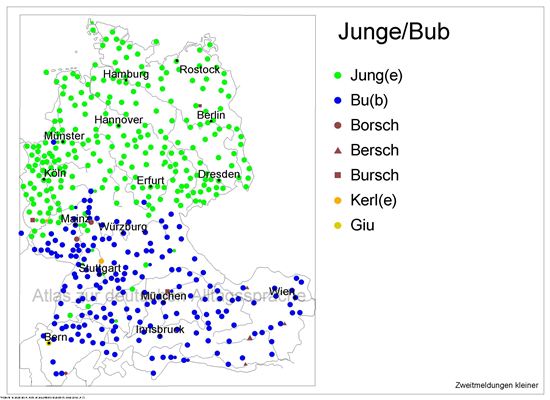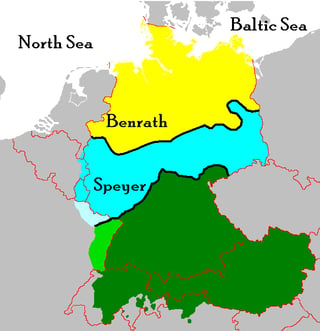I hope you excuse the sloppiness of the following description, but I'd like you to realize that only a qualitative approach –instead of a desired quantitative one– is possible. (Otherwise, if you provide the data, I'd be happy).
The question in a pair of words is explain this division line (see bellow the actual question).

Want to see it again? (not so clearly, though)

Or, like here, that line is lower, but still inside Germany and encompassing most Bayern and Baden-Württemberg:

No, seriously, that line doesn't appear only once. I've been browsing some minutes on the AdA, and I find that pattern quite often.
I think it's interesting because one could expect that abrupt division on the boarder of a country, but inside a country is somehow counterintuitive.
- Is there an objective argument explaining this rather unexpected behaviour?





